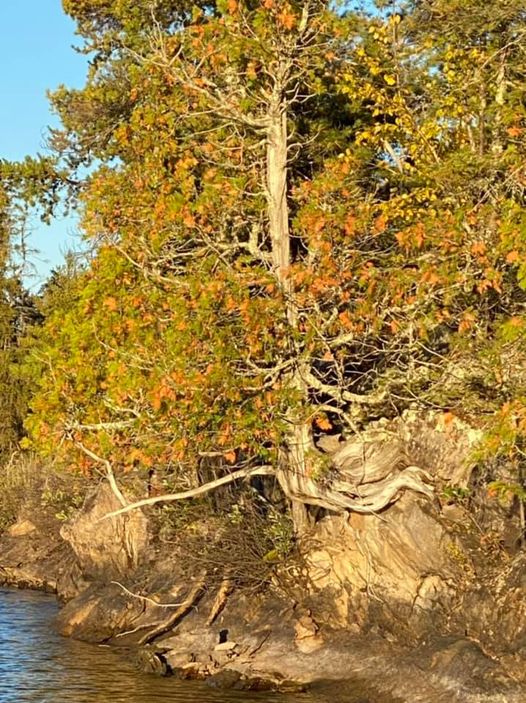The Witch Tree

AS A LOVER OF TREES and grower of bonsais, I have a special fondness tor the hardy, stunted trees of northern shorelines. Like this little cedar, holding fast to its rocky home and the meager sustenance it provides, they are a testament to toughness and perseverance, to being who you are and belonging where you are. This wonderful tree has been here—only a couple hundred yards from Fawn Island—for a very long time. It has become nearly a part of the rock itself. I love to paddle beside it and imagine all it has known, the rising and setting of the sun, the turning of the stars, the comings and goings of the Ojibwe (Anishinabe) the Voyageurs, the gold-seekers and the loggers. I love the look of its silvered trunk and roots, the strength of its grip. I love everything about it, and wish that it could tell me all its secrets of living, of persisting, of growing and surviving, of its unique and peculiar beauty.
On the shore of Lake Superior, near the Grand Portage, is a twisted tree the Ojibwe call Manidoo-giizhigans—Spirit Little Cedar Tree. It is more widely known as the Witch Tree. But it has nothing to do with witches, and much to do with spirit. With the essence of things. This little tree shares that essence, that strength, that spirit.